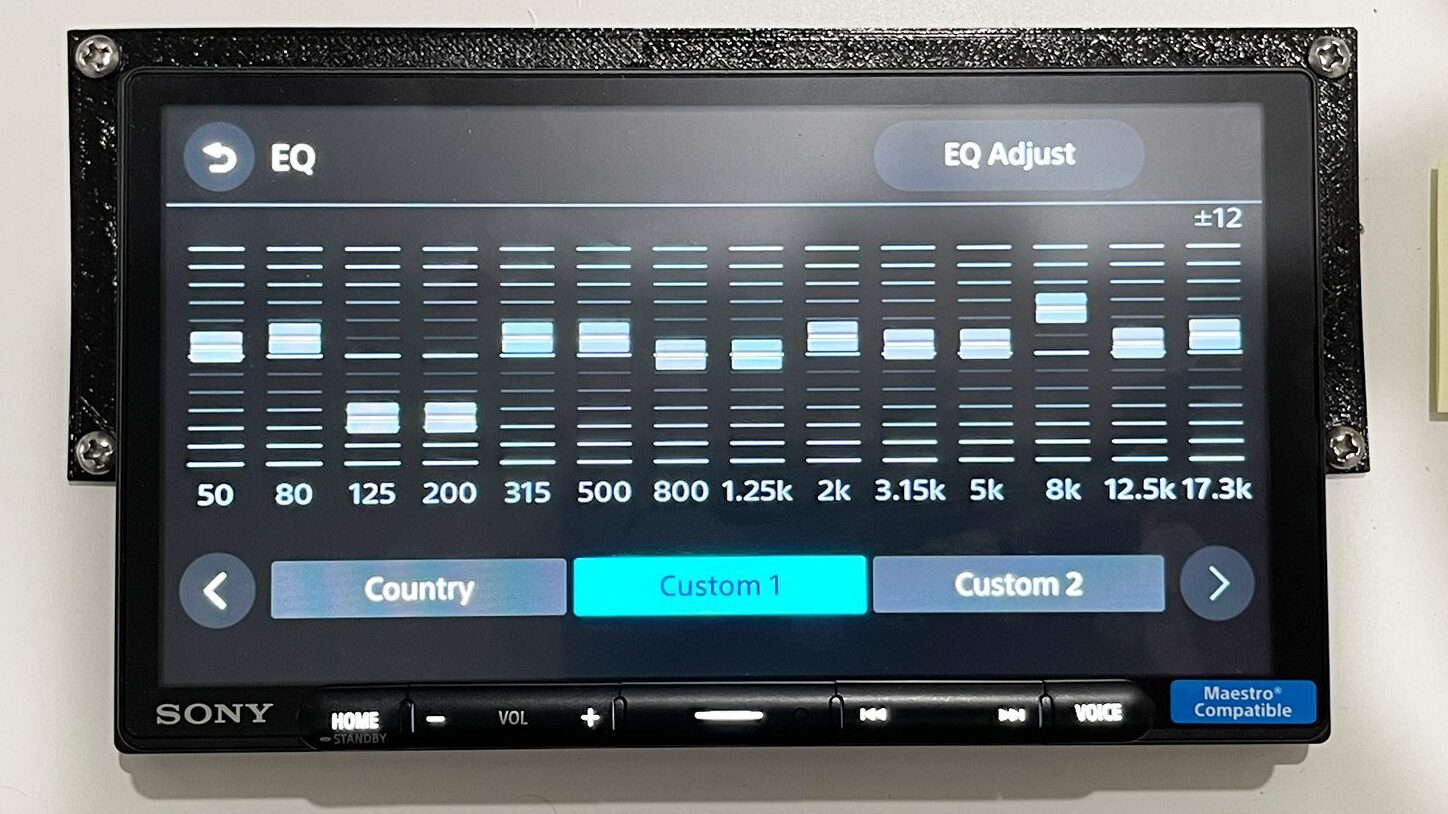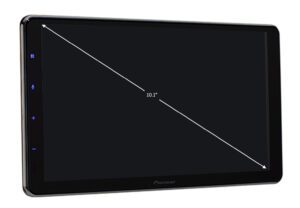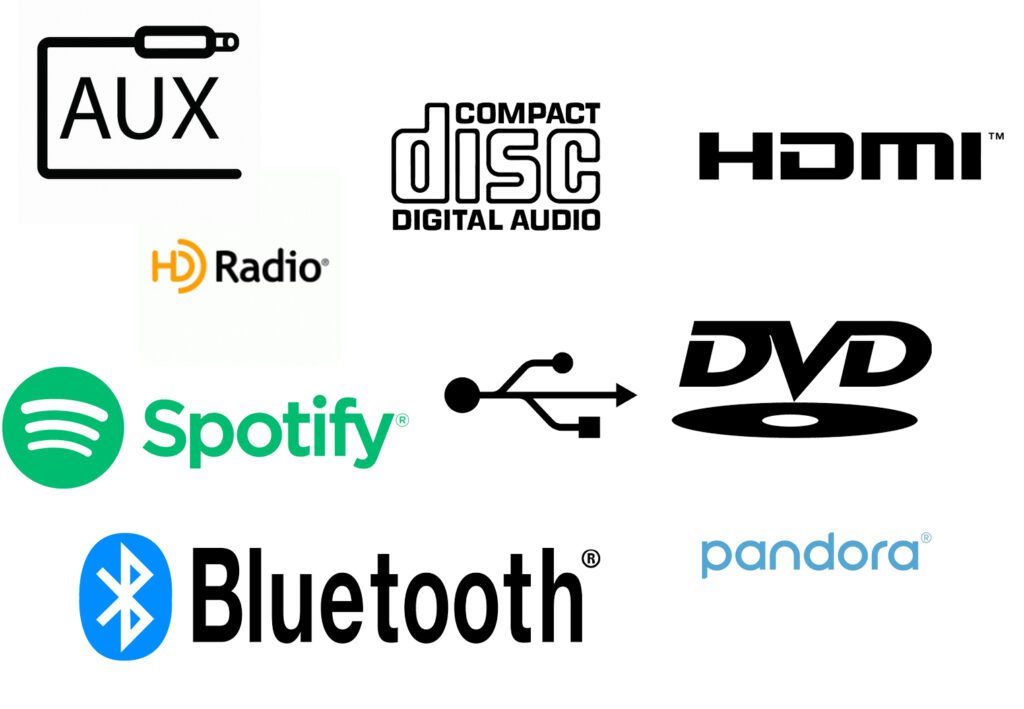Home > Learn > Choosing the Right Equipment > How to Choose the Right Car Stereo Head Unit: A Comprehensive Guide
Every car requires a unique combination of car stereo components to sound great. A car stereo may sound excellent in one car, but sound terrible in another. Limitations in dash size and wiring configuration may also make selecting the right car stereo for your vehicle even more difficult for you. First thing that we recommend checking is the size of your dash based on your vehicle's year, make and model. You can do this in our interactive dash size lookup.
The ideal car stereo (also referred to as receiver or head unit depending where you look) will provide you with the the latest technology on the market, the key features you love, while conforming to the limitations of your car. All while providing your speakers with the clean signal and power they need to produce high quality sound. With the right head unit, you'll be able to custom tailor frequencies to your car, integrate your favorite music/media device, connect to your smartphone via bluetooth and much more.
When we look into head units on our test bench, online or in a car, we run through a variety checks. Let's talk through some of the key components and terminology that we personally find important. It's what we use when we compile our list of best car stereos, and think that you should too!
Power Ratings
Power ratings are an extremely important metric to consider when you're researching a head unit – especially if you do not plan to power your car's speakers with a separate amplifier. Without an external amplifier, the power output of the head unit is what will dictate the power and signal quality to your speakers and ultimately things like clarity and volume. There are typically two power output ratings that are given with car stereos:
- Max Power Output: Max power rating is the maximum amount of power that the car stereo can emit for short bursts of time. It is the maximum amount of power that will be sent to your speakers. Honestly, we disregard this spec most of the time. It's a secondary metric that we use when matching speakers.
- RMS (Continuous) Power Output: RMS power rating is the amount of power that the car stereo can emit at a constant or continuous rate. This is the most important power output rating of the two, and what you should be interested in if you're matching your head unit with new or existing speakers. From what we've seen, the higher the better. Aftermarket head units alone rarely exceed the power handling of a decent aftermarket speaker.
Audio Control & Tuning

Along with power handling and output, the control that the head unit provides you to tune the output sound's shape is also a very important aspect that we consider. This control is typically made through a built-in equalizer (EQ). It will allow you to tailor the shape of sound, raising or lowering the level of certain frequencies in order to best optimize the output sound for the environment of your car. The higher the number of bands that the car stereo's equalizer has, the more you will be able to customize the frequencies and shape of your music and sound.
In most cases, these are controls/configurations that are set by a professional. Especially for stereos with EQs of 10+ bands. Tuning a head unit's EQ without any prior knowledge or understanding of the feature can do damage to your system. Nonetheless it's something that we consider in a head unit and if tuning and audio control is important, you should consider it as well.
Screen/Display

The touch screen and display obviously play a huge role in how stylish and user-friendly car stereos are. A couple of key things that we like to look into with respect to a screen
- Screen Size – Duh.. Depending on whether it's a single DIN, double DIN or oversized touchscreen we generally like to make sure that the screen size is comparable within the category of head units we're looking at. For 2 DINs, for example, 6.95″ or 7″ screens are ideal. For oversized touchscreen units, 10″ or larger is ideal.
- Touchscreen Type – There are two mainstream types of touchscreens – capacitive and resistive. This might be a personal preference, but generally capacitive screens have a higher quality image. They also feel much like you're interacting with your smartphone. Resistive head units, on the other hand, feel a little like touching a cushion. The image is sometimes a little less clear than capacitive but unlike capacitive touchscreens, you can interact with a resistive screen with virtually anything (for example your fingernail or tip of a pen).
- Resolution – for touch screens, resolution is what has the biggest impact on the image quality. Similar to your TV, head units can be HD, 1080p and so on. 800×480 is standard, while 1280×720 is normally found on higher end units.
- LED Pixel count – for single din car stereos, this is important. The higher the number of pixels the better the clarity and, in general, the more information the screen is capable of displaying.
Audio Playback

We think of audio playback as the methods or sources in which your car stereo is capable of playing back audio. CD, DVD, MP3, HD Radio, streaming audio (Pandora, Spotify, Apple), Auxiliary (Aux) Ports, Bluetooth; these are all examples of playback methods that a car stereo will typically have. Although, CDs and DVD/Blue Ray are becoming outdated but we still try to keep our lists updated with some options!
You will want to make sure that the playback methods that you intend on using are supported by the receiver you choose, otherwise you may be stuck with a head unit that doesn't play your music in the format that you use on a day to day basis. Here is a breakdown of the most popular playback features that we look for in a unit. Note which ones are important and make sure that the unit you choose to purchase supports them!
- HD Radio: HD Radio is the same radio stations that you listen to, but with a higher audio quality and more metadata than tradition radio. Metadata includes titles, artists, albums and more. Besides sound quality, HD Radio sometimes can have cool features like search by category, or favorites in your local area.
- CD/DVD Player: CD and DVD players will play your favorite audio and video in a variety formats. They're becoming less and less common on today's market and are commonly replaced by units with an A/V, Aux and/or HDMI port.
- Auxiliary (Aux) Port: Auxiliary ports allow you to connect virtually any music device through the use of a headphone or RCA connector. Typically, a head unit will have an auxiliary port on the front of the unit or on the rear.
- Bluetooth: Bluetooth music allows you to connect to your music on a smartphone or other bluetooth enabled device, playing all of your music wirelessly from your device via a Bluetooth connection. Bluetooth version is also important. We look for Bluetooth 5.0 or better.
- USB Port: A USB port will allow you to connect your music devices via a USB connection. It will allow you to listen to your favorite music from your device, while charging it for endless listening time.
- XM Radio: XM radio is satellite radio such as SiriusXM, that allows you to connect and listen to thousands of channels of radio via a satellite connection. This increases the coverage of radio that you have, however requires a paid subscription.
- Apple CarPlay/Android Auto – The newest type of connectivity used in both OEM and aftermarket head units, Apple CarPlay and Android Auto bring many of the features you love on your smartphone directly to the head unit in a familiar format. Check out our overview of CarPlay and Android Auto to learn more information about these features.
Smartphone Integration
Smartphone integration is probably top three features that we look into heavily when we test or review a car stereo. Nothing less of full integration with your smartphone is what a head unit should have in today's market in order to enable features/apps like Pandora, Spotify, Apple Music, Google Maps or Waze, and more – all while allowing you to answer phone calls wirelessly without pulling your phone out of your pocket or bag.
With legislation in most states prohibiting you from using your phones while driving, it's important for the receiver to fully integrate with your smartphone not just for convenience and safety – it's the law!
One other related aspect that we group with Smartphone Integration is noise cancelation. All units that support wireless calls will come with a microphone and noise-canceling technology that will hone in on your voice and eliminate road noise. Some do it better than others. Worth considering!
Expandability
Expandability is what allows you to connect to the various other external components to your car stereo. By components, I mean an aftermarket amplifier, subwoofer, or maybe even a headrest monitor. So if you think you'll want to add to your current stereo or already have components that might require specific outputs or inputs, this section is particularly important for you.
Generally speaking, we like to see:
- At least three separate pairs of 4V or 5V RCA outputs (Front, Rear, Subwoofer) for an aftermarket amplifier(s).
- Audio/Video (AV) input/outputs for external monitors.
- An HDMI input or video devices like your smartphone, DVD player or even a game console.
- At least two camera inputs for supporting a backup camera and other camera location.
- USB and/or USB-C port for thumb drives. Two separate ports are ideal.
We'd love to support you and your decision to purchase a new head unit! If you haven't already, shoot us a comment below if you have any questions and of course take a look through our curated list of best car stereos that take all of these components into consideration. We've broken them down by feature too, so if there's something that is a non-starter for you, hopefully we'll have found a highly rated unit with all the features that fits your needs!
